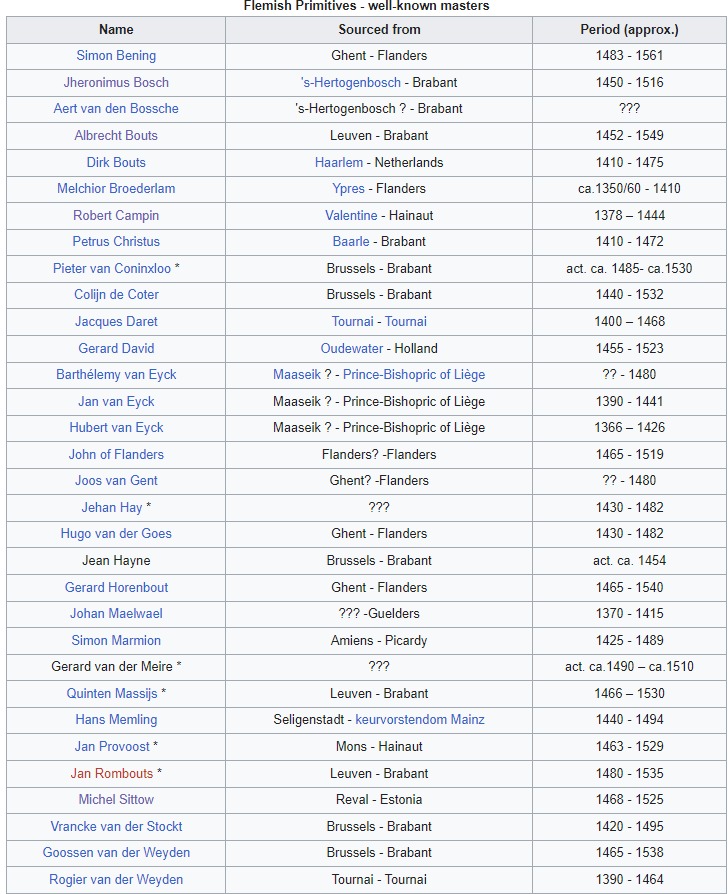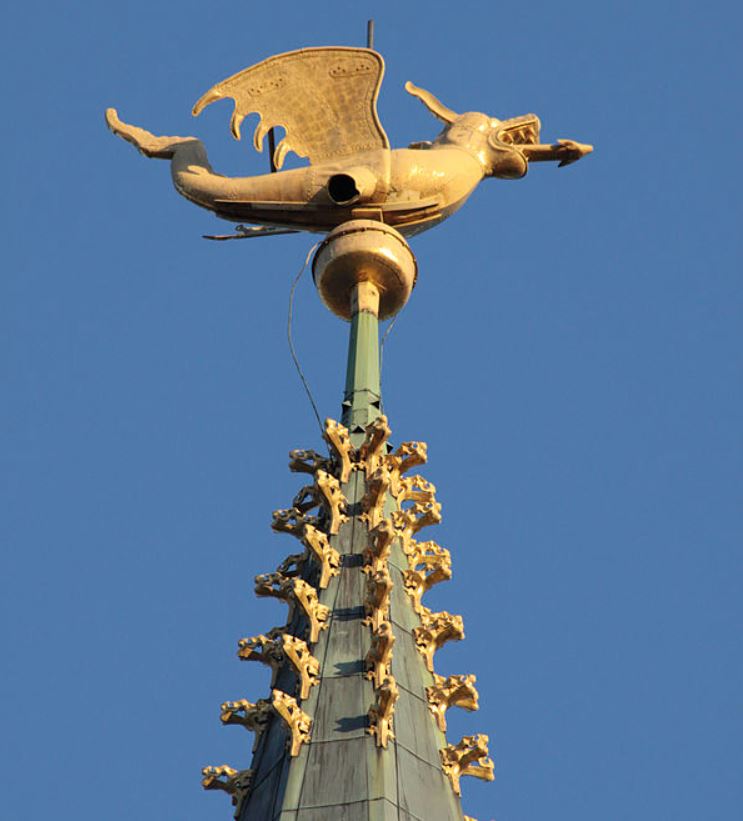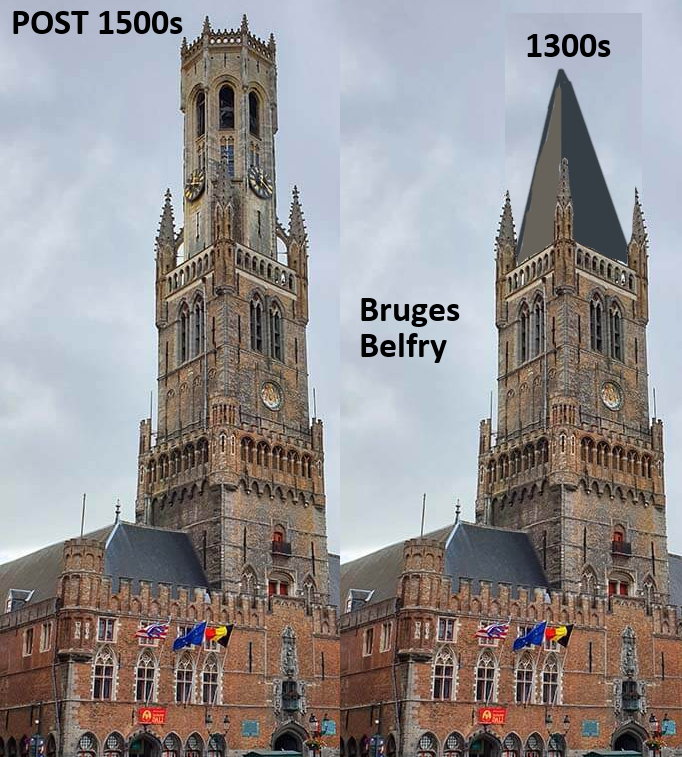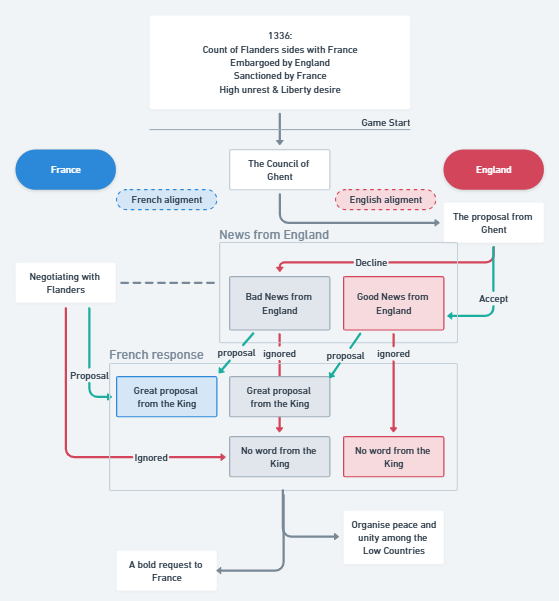Strap in, it's a long one!
I will split my suggestions up into several posts, you can scroll to each section by clicking the links in this outline.
If there's one thing I'd like you to read up most about is:
- 100 years war Flavor
So if you have any additional suggestions, remarks or additions please add them here!
DISCLAIMER: all modifiers and effects I suggest are indicative only and are not to be taken literally, as I have no way to have a feel for the game's balancing.
Sources:
No prominent position:
I will split my suggestions up into several posts, you can scroll to each section by clicking the links in this outline.
If there's one thing I'd like you to read up most about is:
- 100 years war Flavor
So if you have any additional suggestions, remarks or additions please add them here!
DISCLAIMER: all modifiers and effects I suggest are indicative only and are not to be taken literally, as I have no way to have a feel for the game's balancing.
Sources:
- Primary sources:
- Metropolen aan de Noordzee, 2010, Wim Blockmans - I need to digitise my notes still, will add them here once I've done that
- Beschrijvinghe van alle de Nederlanden, Lodovico Guicciardini - my notes for it can be accessed through this google doc
- Secondary sources:
- Tangential stuff:
Outline
1.Starting situation (this post)
Flavor text
Nation Attributes
Estimate of Societal Values
Diplomatic setup
2. Structural Flavor
Starting Works of Art
Unique Governent forms
Unique Buildings ("Monuments")
Unique Advances
Special Units
Special Buildings
3. Narrative Flavor part 1 - 100 Years War
The Role Flanders in the 100 years war
Starting Conditions
Dynamic conditions
Sequential events
4. Narrative Flavor part 1 - Others
The Silting of 't Zwin
The Rise of Antwerp
Devotio Moderna
1. Starting situation
Flavor text
Positioned on a crucial trade crossroad and centuries of expanding the cloth industry have turned Flanders into the wealthiest, most densely populated and most urbanized region North of the Alps. However, for the past 40 years internal conflicts and hostility of their French overlord have strained the county considerably, burdened by famine, revolts, fines, unemployment and high unrest.
The count ignored the plea of his subjects to align himself with England to secure the wealth of the nation, but instead validated his alignment with France in 1336. Years of fines, armed conflicts and several revolts are pushing the populace once again to pursue a better future with England. The crippling response of the English in the form of a wool embargo caused widespread unemployment and is pushing the laborers and burghers to the edge. True power in Flanders lies within the major cities of Ghent, Ypres and Bruges, and tensions are nearing a breaking point.
Will Flanders be able to navigate the treacherous diplomatic waters between England and France in order to secure its future? Or will fate be determined by the whims of these foreign powers?
Nation Attributes
| Feature | Name | Details |
|---|---|---|
| Ruler | Louis I van Vlaanderen | (stats pretty bad at ca. 30 30 30) |
| Spouse | Marguerite de France | (1320: royal marriage with France) |
| Children | Elisabeth van Vlaanderen Louis II van Male | born 1325 born 1330 (historical successor, decent stats of ca. 60 70 50) |
| Succession law | Primogeniture | |
| Religion | Catholic | |
| Culture | Low Franconian | |
| Capital | Bruges | |
| Overlord | France | (see 100 years war) |
| Subject Type | Vassal | z |
| Court language Popular Language Clerical Language Market Language | FRENCH(!) Germanic ( "Dutch") Latin Multilingual | Bruges market thrived due to its multilingual nature |
| Special feature | Laborer Estate | "de Ambachten" acquired council seats and a lot of power in the 1300s |
| ... | ... | ... |
Estimate of Societal values
| Bruges is where the European world comes together to trade. No matter the regional rivalries, trade flowed freely in the autonomous cities of Flanders. The birth of the stock market on the Bourse square is not far off. |

| 
| The Burghers in Flanders were extremely influential ever since the 1100s, up to the point where nobility loaned from burghers, and where the cities had near total autonomy. In december 1337, the burghers easily usurped the count, invoking a plutocratic shadow government. |
| For centuries Flanders has had to juggle relations between France and England to safeguard its autonomy with one, and trade income with the other. Although winning some notable battles, it has been centuries since Flanders had any significant visions for conquest, and relied heavily on politics and diplomacy | 
| 
| The cloth industry has been flourishing for over 200 years now, which has resutled in a highly urbanised and highly specialised economy, where the urban needs dictate which specialty crops are grown on the fields outside the cities. |
| In order to keep its foreign neighbors and trading partners placated, foreign relations have been of the utmost import. In contrast, internal relations were sometimes neglected and caused internal conflicts. | 
| 
| The wealth accumulation over the years has lead to a surge in capable individuals who are pushing their own ambitions. Plenty of wealthy individuals have honed their skills both locally and abroad, attempting to join the most prestigious courts. |
| Ever since the rise of urbanisation in the 1200s, the surplus of available peasants and laborers resulted in commoners being able to move to the cities to pursue other ventures. The Charter of 1128 was an early and more expansive variant of the Magna Carta, restricting the fickle unjustified demands of the count towards low nobility and burghers. | 
| 
| With no lack of wealthy and ambitious people, the high society of Flanders is always curious for the latest fashion, entertainment and art. |
| The nation has a lot of devout catholics, although there are a lot of emergent schools of thought that focus on personal modesty and being humble (devotio Moderna). Several elements of later reformationist theories were sporadically present in Flanders in the14th century (e.g. anabaptism). The clergy was very stern on limiting their influence. | 
| 
| Flanders has no great history of a specific focus, although the emergence of mercantile trade is gradually transitioning Flanders into a navally focused region. |
No prominent position:

| 
| 
| 
|
Diplomatic setup
- See 100 years war segment for relations with France and England
- Embargoed by England (wool)
- 'Senior partner' of:
- Nevers (since 1272/1322)
- Rethel (since 1285)
- Namur (since 1263)
- Mechelen (since 1333)
- bought from Liege, co-owned by Jan van Brabant in 1337
Last edited:
- 9
- 7
- 1










